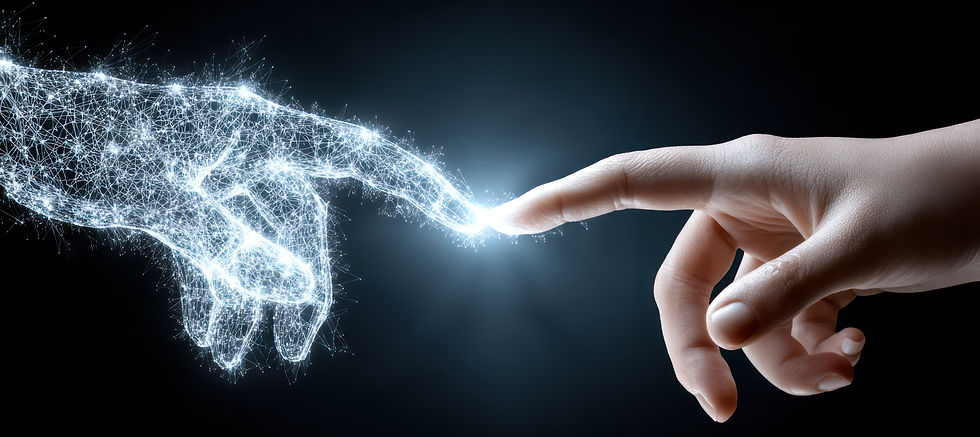Wave-Particle Duality: When Light Behaves Like Matter
- Cristiano França Ferreira
- Aug 23
- 3 min read

Wave-Particle Duality: When Light Behaves Like Matter
Have you ever wondered if light is a wave or a particle? The answer from modern physics is: both . This ambiguity, called wave-particle duality , isn't just a theoretical oddity—it's at the heart of quantum mechanics and reveals a fascinating truth: reality behaves differently depending on how we observe it .
The History of the Dilemma
For centuries, scientists have debated the nature of light. In the 17th century, Isaac Newton argued that light was made of particles. Christiaan Huygens proposed a wave model.
In the 19th century, Thomas Young proved that light behaved like a wave by performing the double-slit experiment , where beams of light created interference patterns — something typical of waves.
But in the early 20th century, Albert Einstein , in explaining the photoelectric effect , showed that light also behaves like particles, called photons . For this work, he received the Nobel Prize in 1921.
"It is as if light were an entity with a split personality." — Richard Feynman
What is Wave-Particle Duality?

Duality states that:
Light and other particles (such as electrons, protons, etc.) can behave either as waves or as particles , depending on how they are measured.
The behavior is not fixed in the particle itself , but in the experimental arrangement and the interaction with the observer .
This means that:
Light can be diffracted as a wave,
But it can also be counted as individual photons in detection experiments.
The same goes for matter : electrons , atoms , and even entire molecules have been observed producing interference patterns typical of waves.
The Matter Wave Formula
Physicist Louis de Broglie , in 1924, extended duality to all matter. He proposed that every particle has an associated wavelength, given by:
λ = h / p
Where:
λ = wavelength
h = Planck's constant
p = linear momentum of the particle
This theory was soon proven with electron diffraction experiments , confirming that all matter has a wave nature , although its manifestation is more evident on subatomic scales.
A Curiosity: The Microwave and Burnt Bread
Did you know that the same principle that explains duality also underlies how microwaves work? The oven generates electromagnetic waves that vibrate the water molecules in food, heating it.
That's why when you heat dry bread for a long time, it burns on the outside before it heats up on the inside - the waves act like waves , interacting with matter in specific patterns, depending on the density of the substance.
It's the same kind of wave behavior that particles demonstrate in the lab, but applied to your morning coffee .
The Philosophical and Scientific Impact

Duality is not limited to an experimental dilemma - it challenges the very notion of “objective reality.”
Niels Bohr's famous quote sums up the shock:
"It is not wrong to think that the particle behaves like a wave. What is wrong is to believe that it is one thing or another."
Quantum physics does not describe objects as “things” with defined properties, but as probabilistic entities , whose characteristics only become defined when measured.
Modern Applications

Duality is the basis for technologies that are already part of our lives:
Electron microscopy : uses the wave behavior of electrons to obtain very high-resolution images.
Lasers : are produced by controlled photon emission processes.
Semiconductor chips : work based on the quantum behavior of electrons in materials.
Quantum computers : take advantage of the superposition and interference of quantum states — direct inheritances of duality.
Final Reflection: Not Everything Is What It Seems

Wave-particle duality teaches us that reality can be much more fluid and contextual than we imagine. It reminds us that, at a fundamental level, the universe responds to how we observe it.
“Light is a question. The universe is the answer.” – David Deutsch
By accepting that a particle can also be a wave - and that nature does not fit neatly into our categories - we learn to respect the complexity of the world , and perhaps even our own complexity as human beings.



Comments